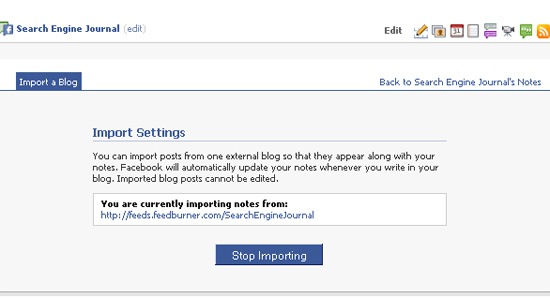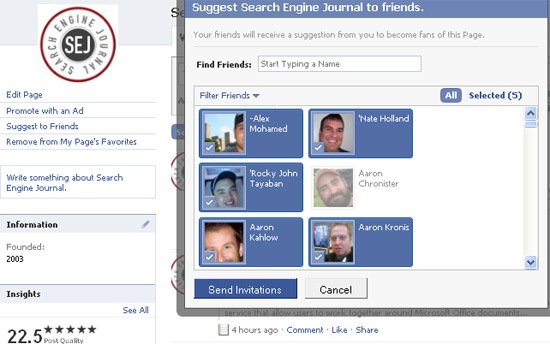Firefox, currently in version 3.5.3, is a free yet highly secure search engine from Mozilla. It works on Windows, Linux and Mac and is attested by its many users, including me, to be very user friendly. What is more interesting about this search engine is that, you can customize it to fit your unique requirements through additional themes and addons. For bloggers or webmasters who are are looking to increase the traffic to their blog, search engine optimization is one of the major aspects that they have to work on. To save time and make it easy to implement most of the SEO required for websites, there are actually a number of Firefox addons for these specific purposes that are easy to download and use.
Here, we are going to list the best 10 recommended Firefox addons that you can use with your Firefox browser to make your link building and search engine optmization life simpler when searching, browsing and comparing. Using these Firefox addons will surely cut the time you spent on searching for data and give you more time optimizing your sites.
If you don’t already have Firefox installed, go grab it!
Firefox addon 01- SEO for Firefox
SEO for Firefox pulls in many useful marketing data points to make it easy get a holistic view of the competitive landscape of a market directly in the search results. The data that you could view using this tool include page link data or the estimated total number of links pointing to pages in Yahoo, how many sites in Google are indexed, Alexa site rankings, the Page Rank stats (Google PageRank) as well as the number of subscribers of certain blogs.
Firefox addon 02 – SEO Quake
SEO Quake works almost the same way as the first Firefox addon but with a few twists. Very handy if you have limited time (which is lamost always the case) but you needed to do a competitor search such as in cases where you need to check a webpage’s Google PageRank, number of pages indexed by Google, MSN, number of backlinks indexed by Yahoo Site Explorer, Alexa Ranking, Domain Age, Whois and other SEO-related statistics. Once activated, it can be integrated on Google SERPs.
Firefox addon 03 – KGen
Keyword generator analyzes a page for keyword frequency and placement. It allows you to see what keywords are strong on a website you are visiting. Since the addon offers transfer to clipboard, it is easier to use these keywords as tags when promoting posts in social media sites or webmastering/SEO or when tagging bookmarks.
Firefox addon 04 – Firebug
Firebug integrates with Firefox to put a number of essential development tools at your fingertips while you browse. You can edit, debug, and monitor CSS, HTML, and JavaScript live in any web page. You can also find and edit DOM (Direct Object Model) quickly.
Firefox addon 05 – YSlow
YSlow analyzes web pages and suggests ways to improve their performance based on a set of rules for high performance web pages. YSlow is a Firefox add-on integrated with the Firebug web development tool. YSlow grades web page based on one of three predefined ruleset or a user-defined ruleset. It offers suggestions for improving the page’s performance, summarizes the page’s components, displays statistics about the page, and provides tools for performance analysis, including Smush.it™ and JSLint.
Firefox addon 06 – Foxy SEO Tool
Foxy SEO Tool is a free, open source toolbar that provides quick and easy access to a multitude of search engine functions such as Google Site, Yahoo! Site Explorer, Live Fromlinks. Also included are famous web traffic analysis sites such as Alexa, Compete, Quantcast, popular statistic aggregators like Quarkbase and WebSite Outlook. You can check a site’s listing in important directories like Dmoz and Yahoo! Directory, buzzing Web 2.0 sites such as Technocrati, Wikipedia, Digg, Delicious and links to useful network functions like Whois, Geotool, Internet Archive, etc.
Firefox addon 07 – Search Status
This Firefox addon allows you to display the Google PageRank, Alexa rank, Compete ranking and SEOmoz Linkscape mozRank of any website in your browser, along with fast keyword density analyser, keyword/nofollow highlighting, backward/related links, Alexa info and other SEO tools.
Firefox addon 08 – Flag Fox
Flagfox is an extension for Mozilla Firefox that shows a flag icon indicating the current website’s server location. It uses relatively little resources, and works by accessing an IP address location database contained within the extension rather than relying on top-level-domain roots like “.com” or “.uk”. Clicking the icon loads Geotool, which provides a map of the location as well as more detailed information such as the ISP, city, and local time. The context menu also provides quick access to information about the country of origin, as well as the ability to lookup the domain’s registrant via Whois.
Firefox addon 09 – User Agent Switcher
This Firefox addon lets you switch or view the current page as in a different browser such as Internet Explorer (IE), Opera, NetScape, etc. Comes in handy when you want to check for Cross Browser Compatibility issues or how your site displays in other browsers.
Firefox addon 10 – Web Developer Toolbar
This is the most popular addon for webmasters. So I assume that it is most likely that you are already using this Firefox addon. This toolbar has all the tools that a designer would require to test the design and layout of a webpage such as in analyzing style. It also allows you to view the site without images, shows the layout format, outlines tables, forms etc, validates the code, among the many other things that this addon can perform.
















